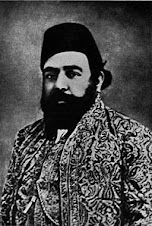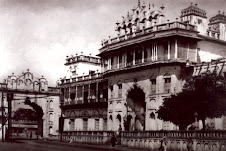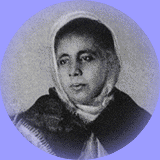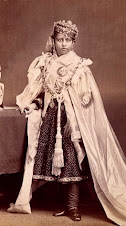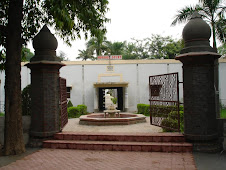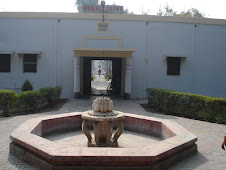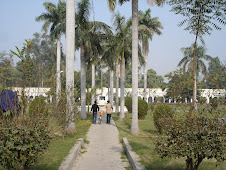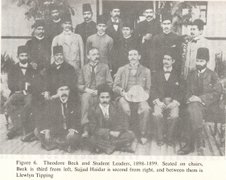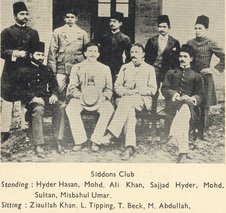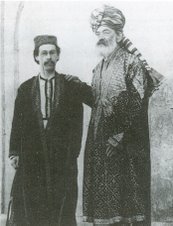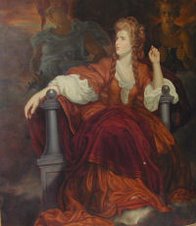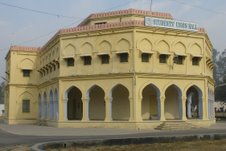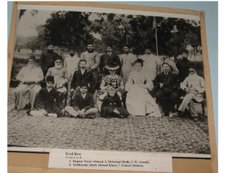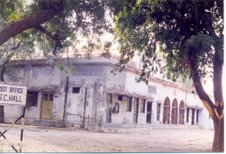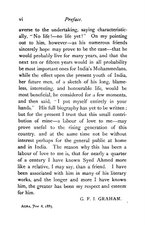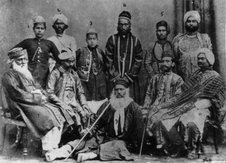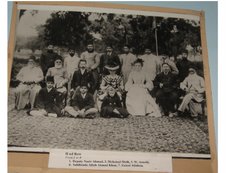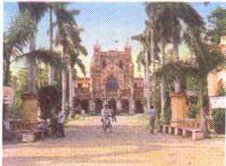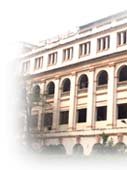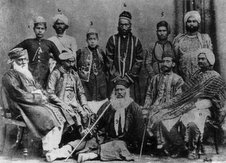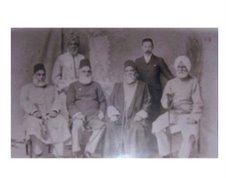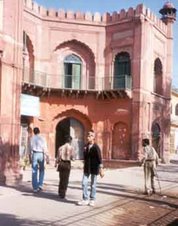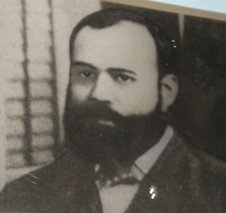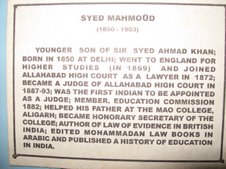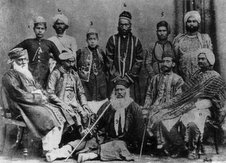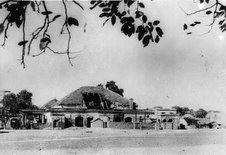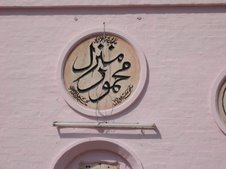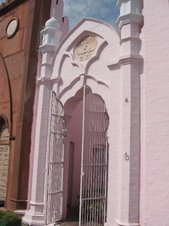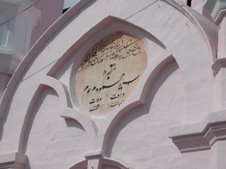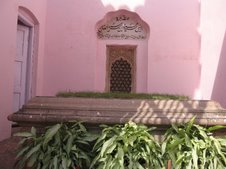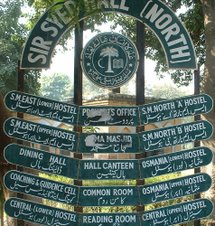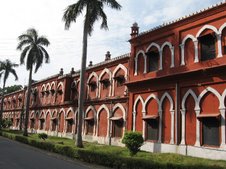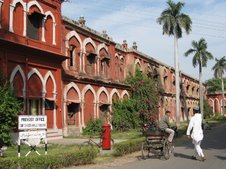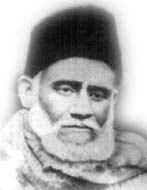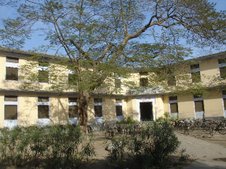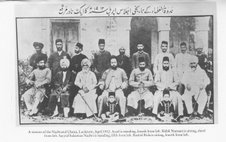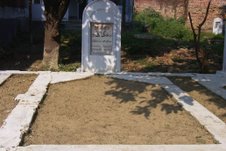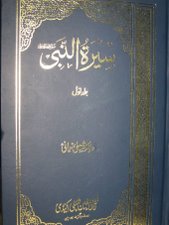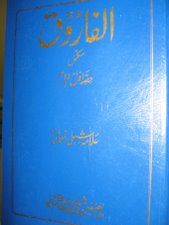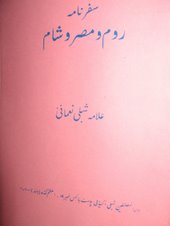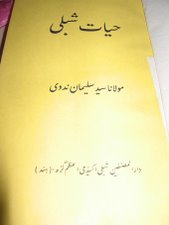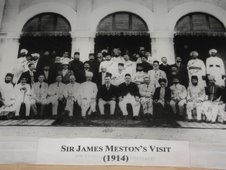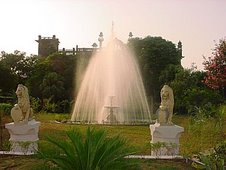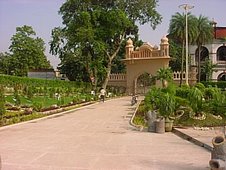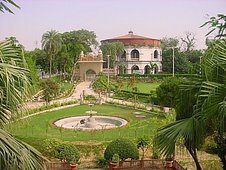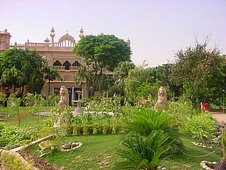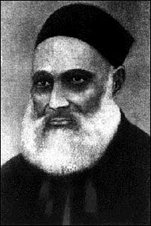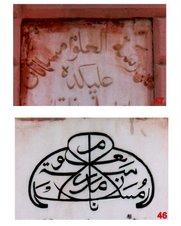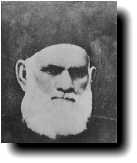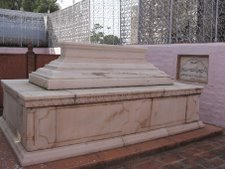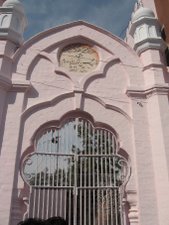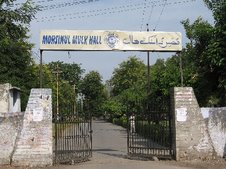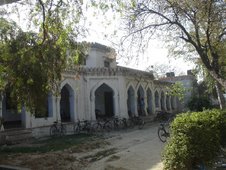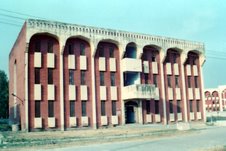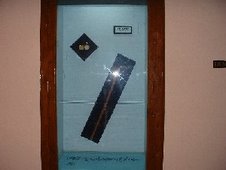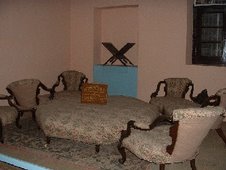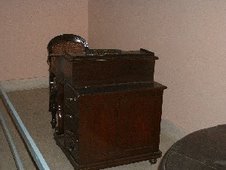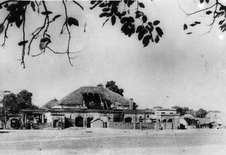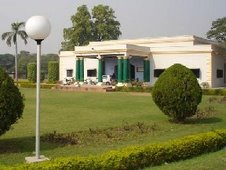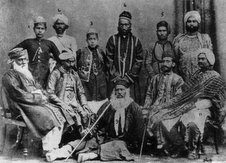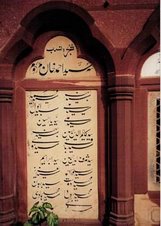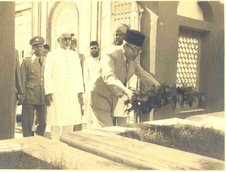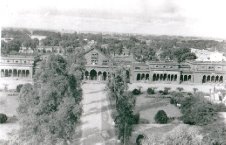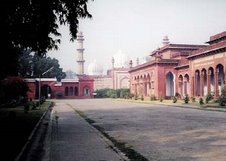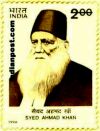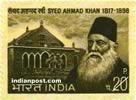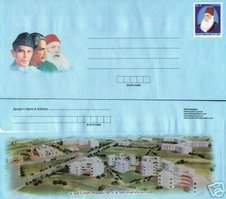Founder Pro-Chancellor : Sir Aga Khan
H.H. Sir Sultan Mohammed Shah, Aga Khan III
Born : 2nd November, 1877 in Karachi : British India now Pakistan
Died :11th July, 1957 : (Burried in Aswan, Egypt)
Spouse: Shahzadi Begum, granddaughter of Aga Khan I.
Married: 2 November 1896, in Poona, India
Cleope Teresa Magliano (1888-1926) Married: 1908
Andrée Joséphine Carron (1898 – 1976) Married: 13 December 1929, in Bombay, India
Yvonne Blanche Labrousse (February 1906 - 1 July 2000)
Married: 9 October 1944, in Geneva, Switzerland
Father: Aqa Ali Shah alias Aga Khan II (47th Imam of the Shia Ismaili Muslims)
Mother :Nawab A'lia Shamsul-Mulk, A granddaughter of Fateh Ali Shah of Persia.
Children:Giuseppe Mahdi Khan (died February 1911) and Ali Solomone Khan
(1911-1960) from Cleope Teresa Magliano
Sadruddin Aga Khan from Andrée Joséphine Carron
Grandson : Karim Agha Khan : 49th Imam of the Shia Ismaili Muslims
Giuseppe Mahdi Khan, Ali Solomone Khan,
Prince Sadruddin Aga Khan : Served as United Nations High
Sadruddin Aga Khan from Andrée Joséphine Carron
Grandson : Karim Agha Khan : 49th Imam of the Shia Ismaili Muslims
Giuseppe Mahdi Khan, Ali Solomone Khan,
Prince Sadruddin Aga Khan : Served as United Nations High
Commissioner for Refugees from 1966 to 1978
Career:
Career:
August 1885- 11th July, 1957 : 48th Imam of the Shia Ismaili Muslims
1902 : Member, Imperial Legislative Council
1906-1913 :Founding President. All-India Muslim League
Visitor, MAO College Aligarh.
10th Jan. 1911 :Founding Chairman, Central Foundation Committee, Aligarh
17th Dec. 1920-April 1930: Founding Pro-Chancellor, Aligarh Muslim University
12th Nov. 1930 : Delegate, First Round Table Conference
1934-37 : Member, General Assembly of League of Nations
1937 : Member, Privy Council
1937-38 : President, General Assembly of League of Nations
1902 : Member, Imperial Legislative Council
1906-1913 :Founding President. All-India Muslim League
Visitor, MAO College Aligarh.
10th Jan. 1911 :Founding Chairman, Central Foundation Committee, Aligarh
17th Dec. 1920-April 1930: Founding Pro-Chancellor, Aligarh Muslim University
12th Nov. 1930 : Delegate, First Round Table Conference
1934-37 : Member, General Assembly of League of Nations
1937 : Member, Privy Council
1937-38 : President, General Assembly of League of Nations
Honors:
1897 :Knight Commander of the Indian Empire
1902 :Knight Grand Commander (GCIE)
1912 :Knight Grand Commander of the Indian Empire
1923 :G.C.N.R.
Books Authored:
India in Transition, about the prepartition politics of India
The Memoirs of Aga Khan, :Autobiography
India in Transition, about the prepartition politics of India
The Memoirs of Aga Khan, :Autobiography
H.H. Sir Sultan Mahommed Shah, Aga Khan III was the 48th Imam of the Shia Ismaili Muslims, a direct dissident of Fatmi dynasty. He was born on November 2, 1877 in Karachi (then British India, now Pakistan) to Aga Khan II and his third wife, Nawab A'lia Shamsul-Muluk, who was a granddaughter of Fath Ali Shah of Persia of Qajar dynasty. In 1885, at the young age of 7 , he succeeded his father as 48th Imam of the Shi'a Isma'ili Muslims. Under the care of his mother, he was given not only that religious and Oriental education which his position as the religious leader of the Ismailis made indispensable, but a sound European training, a boon denied to his father and paternal grandfather. This blending of the two systems of education produced the happy result of fitting this Muslim chief in an eminent degree both for the sacerdotal functions which pertained to his spiritual position, and for those social duties required of a great and enlightened leader which he was called upon to discharge by virtue of his position. He also attended Eton and Cambridge University.
On 2nd November, 1896 Sir Agha Khan III married to Shahzadi Begum, his first cousin and a granddaughter of Aga Khan I in Poona, India. He again married to Cleope Teresa Magliano (1888-1926), in 1908 in North Africa. They had two sons: Giuseppe Mahdi Khan (d. February 1911) and Ali Solomone Khan (1911-1960). Teresa, was known as Princess Aga Khan, died in 1926, following an operation on 1 December 1926. After the death of his second wife, Cleope Teresa Magliano he married to Andrée Joséphine Carron (1898 - 1976) , on 7 December 1929 (civil), in Aix-les-Bains, France, and 13 December 1929 (religious), in Bombay, India. Andrée Joséphine Carron became Princess Andrée Aga Khan. They had one son, Prince Sadruddin Aga Khan, in 1933. Prince Sadruddin Aga Khan had served as United Nations High Commissioner for Refugees from 1966 to 1978. The couple were divorced in 1943. Sir Agha Khan again married, on 9 October 1944, in Geneva, Switzerland, Yvonne Blanche Labrousse (February 1906 - 1 July 2000). She had been "Miss Lyon 1929" and "Miss France 1930". She is also known as Umm Habiba (Little Mother of the Beloved). In 1954, Sir Aga Khan named her "Mata Salamat".
Sir Agha Khan was one of the founders and the first president of the All-India Muslim League in 1906 in Dacca. In 1934 he was made a member of the Privy Council and served as a member of the League of Nations from1934 to 1937. He became the President of the League of Nations in 1937. The Aga Khan travelled in distant parts of the world to receive the homage of his followers, and with the object either of settling differences or of advancing their welfare by pecuniary help and personal advice and guidance. The distinction of a Knight Commander of the Indian Empire was conferred upon him by Queen Victoria in 1897 and later Knight Grand Commander in 1902 by Edward VII. He also received like recognition for his public services from the German emperor, the sultan of Turkey, the shah of Persia and other potentates. He was made a Knight Grand Commander of the Indian Empire by George V in 1912. In 1920, the Governor General of India appointed him as Foundin Pro-Chancellor of newly created Aligarh Muslim University. He wrote a number of books and papers two of which are of immense importance namely, India in Transition, about the prepartition politics of India and The Memoirs of Aga Khan, his autobiography.
On 2nd November, 1896 Sir Agha Khan III married to Shahzadi Begum, his first cousin and a granddaughter of Aga Khan I in Poona, India. He again married to Cleope Teresa Magliano (1888-1926), in 1908 in North Africa. They had two sons: Giuseppe Mahdi Khan (d. February 1911) and Ali Solomone Khan (1911-1960). Teresa, was known as Princess Aga Khan, died in 1926, following an operation on 1 December 1926. After the death of his second wife, Cleope Teresa Magliano he married to Andrée Joséphine Carron (1898 - 1976) , on 7 December 1929 (civil), in Aix-les-Bains, France, and 13 December 1929 (religious), in Bombay, India. Andrée Joséphine Carron became Princess Andrée Aga Khan. They had one son, Prince Sadruddin Aga Khan, in 1933. Prince Sadruddin Aga Khan had served as United Nations High Commissioner for Refugees from 1966 to 1978. The couple were divorced in 1943. Sir Agha Khan again married, on 9 October 1944, in Geneva, Switzerland, Yvonne Blanche Labrousse (February 1906 - 1 July 2000). She had been "Miss Lyon 1929" and "Miss France 1930". She is also known as Umm Habiba (Little Mother of the Beloved). In 1954, Sir Aga Khan named her "Mata Salamat".
Sir Agha Khan was one of the founders and the first president of the All-India Muslim League in 1906 in Dacca. In 1934 he was made a member of the Privy Council and served as a member of the League of Nations from1934 to 1937. He became the President of the League of Nations in 1937. The Aga Khan travelled in distant parts of the world to receive the homage of his followers, and with the object either of settling differences or of advancing their welfare by pecuniary help and personal advice and guidance. The distinction of a Knight Commander of the Indian Empire was conferred upon him by Queen Victoria in 1897 and later Knight Grand Commander in 1902 by Edward VII. He also received like recognition for his public services from the German emperor, the sultan of Turkey, the shah of Persia and other potentates. He was made a Knight Grand Commander of the Indian Empire by George V in 1912. In 1920, the Governor General of India appointed him as Foundin Pro-Chancellor of newly created Aligarh Muslim University. He wrote a number of books and papers two of which are of immense importance namely, India in Transition, about the prepartition politics of India and The Memoirs of Aga Khan, his autobiography.
He died on July 11, 1957 and buried in Aswan, Egypt at the Mausoleum of Aga Khan.The Aga Khan was succeeded by his grandson Karim Aga Khan, as 'Aga Khan' and is the present Imam of the Ismaili Muslims.
Association with Aligarh Movement:
H.H. Sir Aga Khan ascended to the throne of 48th Imam of Ismaili Muslims in August 1885 at an early age of 7 years. The charming Prince made his first visit to M.A.O. College at Aligarh in June 1896 at a very young age of 19 years. Sir Syed Ahmad Khan welcomed him in the historical Strachey Hall. Sir Aga Khan was impressed by Sir Syed Ahmad Khan and his vision and mission. He extended his cooperation to Sir Syed and Aligarh Movement and never widthraw till his last breath. Sir Aga Khan believed that the root cause of Muslim backwardness in India was illiteracy, and therefore, education was the panacea for their ills. He thought that education should be a medium of service to others and a tool for modernization. He also considered the aim of education to be character building. In his book, The Aga Khan III, Mr. Islamuddin writes "It was he, who translated the dream of Sir Syed Ahmed Khan into reality, by raising the status of MAO College at Aligarh into a great Muslim University"[1]. Sirdar Ikbal Ali Shah states in "The Prince Aga Khan" (London, 1933, p. 65) that, "It was Sir Syed Ahmed who founded M.A.O. College at Aligarh, but it was the Aga Khan, an ardent enthusiastic promoter of the ideal of education, who has been mainly responsible for the raising of its status to that of a University"[2].
After the death of Sir Syed Ahmad Khan in 1898, Sir Aga Khan III advised Mohsin al-Mulk, the Secretary of Aligarh College, to tour India to procure public opinion for the cause of Muslim University. His interest in the Aligarh College dates from the time when he was called upon to preside at an Educational Conference held at Delhi at the time of Lord Curzon's proclamation Durbar in 1902. He used the platform of Muslim Educational Conference to bring home to the Muslims, the importance of education, and Muslim University at Aligarh. In his Presidential address to the Muslim Educational Conference, the Aga Khan said: "If, then, we are really in earnest in deploring the fallen condition of our people, we must unite in an effort for their redemption and, first and foremost of all, an effort must now be made for the foundation of a University where Muslim youths can get, in addition to modern sciences, a knowledge of their glorious past and religion and where the whole atmosphere of the place, it being a residential University, nay, like Oxford, give more attention to character than to mere examinations. Muslims of India have legitimate interests in the intellectual development of their co-religionists in Turkey, Persia, Afghanistan, and elsewhere, and the best way of helping them is by making Aligarh a Muslim Oxford. We are sure that by founding this University we can arrest the decadence of Islam, and if we are not willing to make sacrifices for such an end, must I not conclude that we do not really care whether the faith of Islam is dead or not? We want Aligarh to be such a home of learning as to command the same respect of scholars as Berlin or Oxford, Leipzig or Paris. And we want those branches of Muslim learning, which are too fast passing into decay, to be added by Muslim scholars to the stock of the world's knowledge"[3]. Addressing the annual session of Muslim Educational Conference in 1903 at Bombay under the Chairmanship of Justice Badruddin Tayabji, the Aga Khan III said: "The farsighted among the Muslims of India desire a University, where the standard of learning should be the highest and where with the scientific training, there shall be that moral education, that indirect but constant reminder of the eternal difference between right and wrong, which is the soul of education. I earnestly beg of you that the cause of such a University should not be forgotten in the shouts of the market place that daily rise amongst us."
The plan for the Muslim University had by 1910 taken on the complexion and force of a national movement. The session of the All India Muslim Educational Conference at Nagpur in December, 1910 was presided by Abdullah Ibn Yusuf Ali Khan. In his address, Sir Aga Khan gave the signal for a concreted, nation-wide effort to raise the necessary funds for the projected University. In moving the resolution on the University, the Aga Khan III made a stirring speech. He said, "This is a unique occasion as His Majesty the King-Emperor is coming out to India. This is a great opportunity for us and such as is never to arise again during the lifetime of the present generation, and the Muslims should on no account miss it...We must make up and make serious, earnest and sincere efforts to carry into effect the one great essential movement which above all has a large claim on our energy and resources. If we show that we are able to help ourselves and that we are earnest in our endeavours and ready to make personal sacrifices, I have no doubt whatever that our sympathetic government, which only requires proper guarantees of our earnestness, will come forward to grant us the charter. `Now or never' seems to be the inevitable situation."
To make a concerted drive for the collection of funds, a Central Foundation Committee with the Sir Aga Khan III as Chairman with Maulana Shaukat Ali (1873- 1938) as his Secretary; and prominent Muslims from all walks of life as members was formed at Aligarh on January 10, 1911. The Aga Khan III accompanied by Maulana Shaukat Ali, who was still in government service and had taken a year's furlough, toured throughout the country to raise funds, visiting Calcutta, Allahabad, Lucknow, Kanpur, Lahore, Bombay and other places. Willi Frischauer in his book, The Aga Khans writes, "His campaign for the Aligarh University required a final big heave and, as Chairman of the fund raising committee, he went on a collecting tour through India's main Muslim areas: `As a mendicant', he announced, `I am now going out to beg from house to house and from street to street for the children of Indian Muslims.' It was a triumphal tour. Wherever he went, people unharnessed the horses of his carriage and pulled it themselves for miles"[4].
The response to the touching appeal of the Sir Aga Khan III was spontaneous. On his arrival at Lahore, the daily "Peace" of Punjab editorially commented and called upon the Muslims "to wake up, as the greatest personality and benefactor of Islam was in their city." The paper recalled a remark of Sir Syed Ahmad Khan prophesying the rise of a hand from the unseen world to accomplish his mission. "That personality" the paper said, "was of the Sir Aga Khan III." On that day, the "London Times" commenting upon the visit, regarded him as a great recognised leader of Muslims. Allama Shibli Nomani was with Sir Aga Khan in the delegation for fund raiser to Lahore. Shibli recited a very passionate Persian poetry to motivate the audience for fund raiser. The significant aspect of the Aga Khan's fund collection drive was not the enthusiastic welcome accorded to him, but the house to house collection drive. Qayyum A. Malick writes in his book "Prince Aga Khan" that once the Aga Khan on his way to Bombay to collect funds for the university, the Aga Khan stopped his car at the office of a person, who was known to be his bitterest critic. The man stood up bewildered and asked, "Whom do you want Sir?" "I have come for your contribution to the Muslim university fund," said the Aga Khan. The man drew up a cheque for Rs. 5000/-. After pocketing the cheque, the Aga Khan took off his hat and said, "Now as a beggar, I beg from you something for the children of Islam. Put something in the bowl of this mendicant." The man wrote another cheque for Rs. 15000/- with moist eyes, and said, "Your Highness, now it is my turn to beg. I beg of you in the name of the most merciful God to forgive me for anything that I may have said against you. I never knew you were so great." The Aga Khan said, "Don’t worry! It is my nature to forgive and forget in the cause of Islam and the Muslims." The drive received further great fillip from the announcement of a big donation of one lac rupees by Her Highness Nawab Sultan Jahan Begum of Bhopal. The Aga Khan III was so moved by her munificence that in thanking her, he spoke the following words:
Dil'e banda ra zinda kardi,
dil'e Islam ra zinda kardi,
dil'e qaum ra zinda kardi,
Khuda'i ta'ala ba tufail'e Rasul ajarash be dahad”
It means, "You put life in the heart of this servant; you put life in the heart of Islam; you put life in the heart of the nation. May God reward you for the sake of the Prophet!”
In sum, Sir Aga Khan collected twenty-six lacs of rupees by July, 1912 in the drive and his personal contribution amounted to one lac rupees. [5]
On October 20, 1920, the Aligarh University was granted its official Charter. On December 17th, the Aligarh Muslim University came into being. According to the act (Section III) Sir Aga Khan was appointed as Founding Pro-Chancellor of the Aligarh Muslim University. The inaugural ceremony of University took place on the 17th December, 1920. In spite of several obstacles, the Aga Khan continued his ceaseless efforts for the Muslim University, and further announced his annual grant of Rs. 10,000/- for Aligarh Muslim University, which was subsequently raised. On his behest a lot of individuals made their generous contributions to Aligarh Muslim University. For instance, Mr. Kassim Ali Jairajbhoy gave Rs. 1,25,000 to found chairs of Philosophy and Science in the Aligarh in memory of his father. It must be noted on this juncture that in January, 1857, Lord Canning (1856-1862) had passed the Acts of Incorporation in India which provided for the establishment of universities in Calcutta, Bombay and Madras. The fourth university was then established in 1882 by a Special Act of Incorporation in Punjab and the fifth was that of Allahabad University in 1887. Thus, by the end of 1902 there were five universities in India, and Aligarh Muslim University was the sixth one. It will remain as a historical reminder of the fact that the Sir Aga Khan gave continuity to the traditions of his ancestors as pioneers of education in Egypt and elsewhere - traditions associated with the foundation of Al-Azhar, the oldest existing university in the world, which to this day is crowded with students from all parts of the globe. The Aga Khan III instituted the Aga Khan Foreign Scholarship programme for the promising students. It is worth mentioning here that Dr. Sir Ziauddin Ahmad was one of the students of the Aga Khan in the sense that the Aga Khan paid for his years of study at Cambridge. Among other great Muslim scholars, who benefited from the munificent help were Dr. L.K. Hyder, the well known economist, Mr. Wali Muhammad, a great physicist, Dr. Zafarul Hasan, a learned theologian, and Dr. Zaki etc. "The Movement of establishing a Muslim University" writes Mumtaz Moin in his "The Aligarh Movement" [6], "is an important chapter of our history. Initiated by Waqar al-Mulk it soon became a live issue under the patronage of the Sir Aga Khan.
Sir Aga Khan was associated with Aligarh Movement till his last breath. He made numerous visits to Aligarh. In 1936, he suggested to establish engineering and Agriculture College in Aligarh Muslim University. His was a regular generous donor to support the Aligarh Muslim University. He delivered 20th Convocation address of Aligarh Muslim University in 1940. He served as pro-Chancellor of Aligarh Muslim University till April 1930. Aligarh Muslim University honored one of its great patrons by naming one of the hostel after him, “ Aga Khan House” in Sir Shah Sulaiman Hall.
[1] "The Aga Khan III" (Islamabad, 1978, p. 22) ,Islamuddin.
[2] "The Prince Aga Khan" (London, 1933, p. 65) , Sirdar Ikbal Ali Shah.
[3] "Khutbat-i Aliyah", Aligarh, 1927, Part I, p. 206.
[4] "The Aga Khans" (London, 1970, p. 76), Willi Frischauer
[5] "Prince Aga Khan" (Karachi, 1954, p. 64), Qayyum A. Malick
[6] "The Aligarh Movement" (Karachi, 1976, p. 184), Mumtaz Moin





